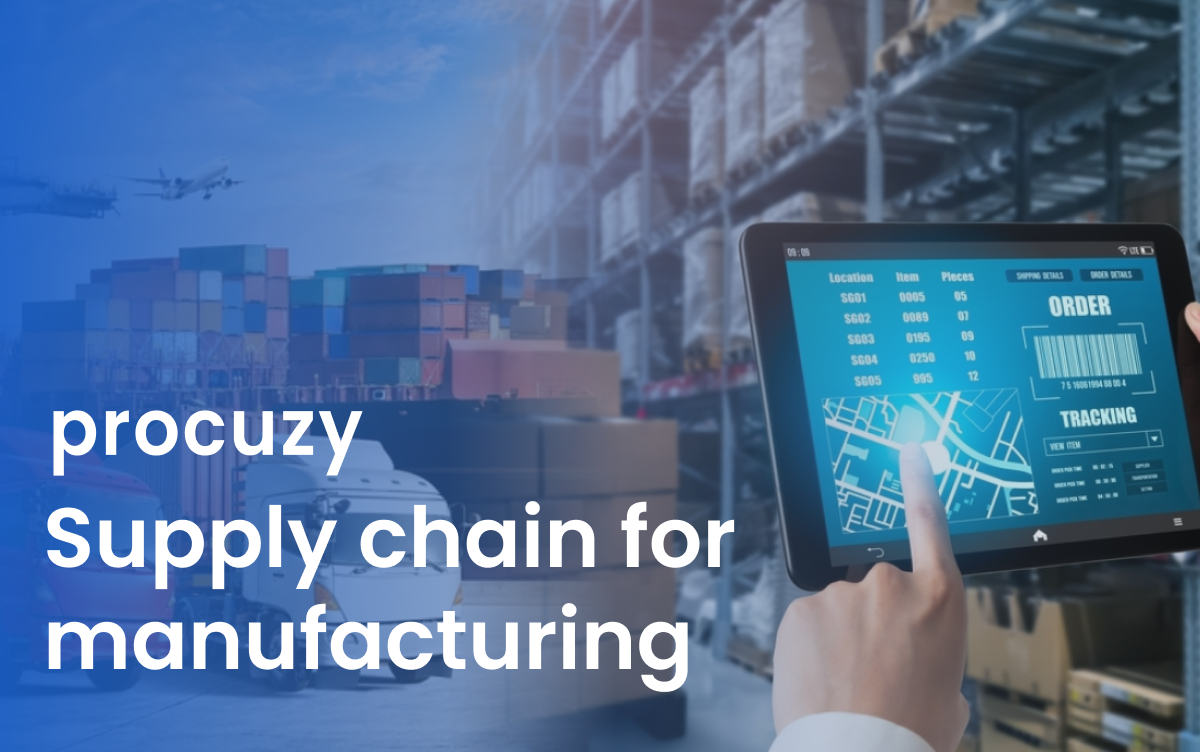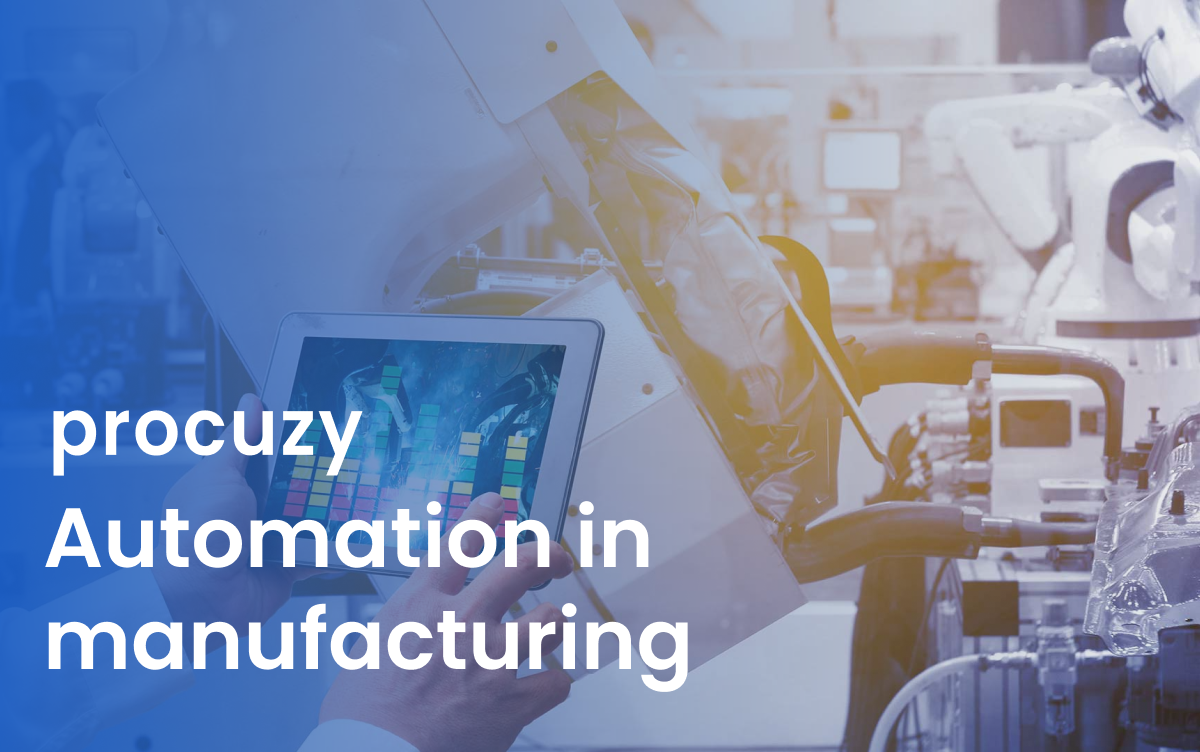
Supply chain for manufacturing can be thought of as the foundation of the manufacturing arena. But what is a supply chain? Let's understand the supply chain.
A supply chain can be understood as a network of people and companies who are involved in manufacturing a product and delivering it to the customer. The supply chain starts with the producers of the raw materials and inventory and finishes when the delivery of the finished product is made to the consumer.
Characteristics of supply chain
A supply chain is a network of companies and individuals involved in the manufacturing and delivery of a product or service.
The components of a supply chain include-
producers
vendors
warehouses
transportation companies
distribution centres
retailers.
The functions of a supply chain-
product development
marketing
operations
distribution
finance
customer service.
Many supply chains are international.
Effective supply chain management can help save costs and allow for a faster production cycle.
Supply chain for manufacturing models
There are many supply chains for manufacturing models. Any company chooses the supply chain for the manufacturing model depending upon its needs. Let's see a few examples to understand better.
Continuous Flow Model- Continuous Flow model is conventional model of supply chain for manufacturing. This model is suitable for companies that produce the same products with slight differences. The products are usually in high demand and there's hardly any need to redesign. Due to almost no fluctuation, it becomes easy for the managers to streamline production times and control raw materials . In a continuous flow model, workers need to regularly restock the inventory
Flexible Model- Flexible model is basically for companies that manufacture seasonal products. These are the companies whose product's demands increase as per the desired season. Apart from that season, there's little to no demand. Through the flexible model, they are able to quickly begin production and shut down efficiently as soon as the demand for their product goes down. To ensure success, the companies must be accurate in their needs of inventory, equipment and labour.
Fast Chain Model- The fast chain model is best suitable for the companies whose products are based on the latest trends. Companies using this model are required to put their products out in market quickly in order to avail the benefits of the prevailing trend. Such businesses require hopping from trends to trends in order to keep up with the market needs. A classic example of the fast chain model is fast fashion.
Supply chain for manufacturing- best practices
Following are some of the best practices of supply chain for manufacturing for a successful business-
Supports continuous and incessant improvement.
Aims for a fast and speedy process.
Aims for encouraging coordination among businesses in the supply chain.
Aims for setting up new technologies that could advance their processes.
Aims to set technology that could tell the parameters of success and failure in the business.
How does supply chain affect manufacturing
As we have understood until now, supply chain plays a vital role in the manufacturing process. Right from the first step of gathering inventory, to the last step of delivering the product to the customer, the supply chain is responsible. The efficacy of the supply chain largely impacts the manufacturing process.
For instance, let's think of a business that sells beverages like shakes and mocktails. Now, the business has to manage their supply chain efficiently in order to make sure that they have enough resources like soda, milk, flavours etc required to produce their finished product. They also have to make sure that the delivery of the products is quick and on time in case they run out. If the supply chain is not efficient, there will be delays in delivering the service to the customers, resulting in dissatisfaction of the customers.
Steps of Supply chain for manufacturing
Different businesses and companies choose different steps of the supply chain depending on their needs and objectives. Effective supply chain management includes coordination and communication, and optimisation of different production phases in order to reduce costs, increase efficiency, and improve customer satisfaction.
We all know that not every solution suits all the manufacturers. However a supply chain in manufacturing commonly includes the following production stages.
Planning
The first stage in the supply chain would be to create a blueprint of the process. In this process, the business determines what, how much, where, and when to produce. This stage involves forecasting demand, setting manufacturing goals and objectives, and devising a production plan. Following stages come under planning-
Demand Planning- Demand Planning is a crucial step in the supply chain. Forecasting customer demand is done by considering the account historical data, market trends, and other related factors. Accurate demand planning is essential in order to ensure that the right products are available. The quantity of the products also needs to be accurate.
Supply Planning- Devising an inventory plan to meet the forecasted demand is essential. During devising supply plans, companies must take into consideration the factors, for instance-
lead times
safety stock levels
manufacturing capacities.
Production Planning- In a manufacturing unit, production planning is one of the most important steps that needs to be conducted before a manufacturer dives in the manufacturing process. The first step in production planning involves tactical and calculated decision making of in what manner every further step will be taken. In production planning, production strategy and plan is clearly laid out. How raw materials and resources will be allocated to produce best results in a cost effective manner is also thought of during production planning. Further, the best ways to meet the demands of the customers are laid out during production planning.
Production Scheduling- Through production scheduling, every activity can be held on specified time and order. This will help minimise wastage of time and efforts and help deliver the products or services to the customers on time. Through production scheduling, the workers in a manufacturing unit can undertake every task and activity as per the schedule. Production scheduling takes into account various factors like availability of equipment and machinery, whether labour is available at the given point of time, availability of raw materials and inventory etc. Using this information, efficient outcomes can be generated through product scheduling.
Sourcing
After establishing the production plan, the next step involves procurement of the resources required to manufacture the products. These include inventory and raw materials, components, and services. In this stage, businesses need to find suppliers, negotiate deals with them, and build professional relationships.
The sourcing process involves following steps-
Supplier identification — The most important step is to identify potential suppliers in accordance to the requirements of the business. Following factors are included- price, quality, time taken in delivery
Supplier evaluation — In this step, suppliers are evaluated on the following parameters- financial stability, quality certifications, performance history, crisis management etc. This evaluation helps businesses to find the best supplier in order to ensure successful procedures.
Supplier selection- In this step, a suitable supplier is chosen based on the previous step of supplier evaluation.
Supplier management- Good relations with suppliers are established so that timely supply of goods and services is ensured.
Manufacturing
Manufacturing is that stage of the supply chain where production of goods takes place. It involves the following steps-
Designing- It involves creating a design or a blueprint of the product beforehand, in order to make sure that it is exactly what you want.
Planning- Planning of the process, for instance production scheduling, planning the resources, labour etc
Executing- To execute the production process using the arranged resources, machinery and workforce.
Logistics
In this next step, the manufactured finished products need to be transported. Following steps are included in the logistics-
Transportation — In this step, the appropriate mode of transportation is chosen, for instance, airways, seaways, railways, or roadways, for transportation of finished products from one location to another.
Warehousing — Storing the products in a godown or warehouse properly and safely, in an organised manner.
Inventory management — In this step, it is ensured that products are available as per the needs of the customers. It is also ensured that excess inventory is not accumulated.
Distribution
Distribution is the final step of the supply chain in manufacturing. Here, the finished goods are delivered to the customers. Distribution can be direct or indirect. In direct distribution, the goods are delivered to the customer directly from the manufacturing unit. In indirect distribution, it is done through retailers or middlemen.
How can Procuzy help with supply chain management?
Procuzy helps businesses streamline supply chains and generate all the reports into a single dashboard. Procuzy manufacturing ERP Software is useful for the organisation in many ways as it makes simple and decision making to the Top Management by using the data from Smart Dashboards and centralised data .


